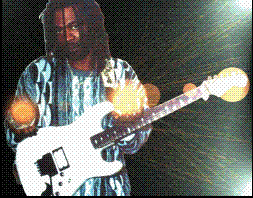
 1st Installment!
1st Installment!
This Installment: “Tonalities and Gaining Multi-Purpose Use Out of Them”
First let’s start at the beginning, Like the most obvious question would be “what is a tonality?” O.K. Let start by understanding that a tonality aka “tonal condition” is a group of intervals (notes) that can be used to identify a recognizable grouping of tones that contain a root, a mediate, and a dominant commonly known as triads. No, triads are not Chinese gangs! Ha ha! They on a serious note (no pun intended) are intervals (in this case) taken from the diatonic (more than 5 notes and less than 12 notes) scale form.
For easy access we’ll use the key of C major because it contains no #’s or b notes (b=flat). A normal diatonic C major scale would look something like this C D E F G A B C. The root note C has a very easy job, he tells which key everything happens in! The 3rd note E tells us that we are in a major related tonality, ( Harmonic major, augmented, dominant, suspended, harmelodic, major, and etc) because a major 3rd is ALWAYS a whole step away from the 2nd, which is a whole step away from the root or 1(key center), the 3rd is very important to identifying tonalities because if the 3rd note is flattened Eb (moved back a half step) it indicates that we are dealing with something that will relate to minor tonal conditions (Diminished, harmonic minor, Egyptian minor, Lun’zaba tonal conditions, etc), this something that should be commented to memory.
The next interval to be addressed is the 5th (G). Now it is important to note that the term perfect 5th only exist in certain conditions, but for right now we’ll look at it as unaltered (G). It represents the last tonal condition change that can effect the basic triad. Now let’s assume that we all know that the triad is the foundation for harmonic construction (chords, harmony, counterpoint, quiad harmony etc) we’ll move into the harmonic equivalent of the major tonality, which would be for the key of C would be A, the (6th), and B( the 7th), because these intervals are the only ones that can give an indication or in some cases “implied indication” to tonality as a matter of fact these intervals used either flattened or sharped can determine even the harmonic bridge “harmonic major, and or harmonic minor” which crosses between major and minor tonalities!
Before we go deeper into the jungle of tonal conditions, let’s first get a understanding of the basic tonal conditions. All of these examples are done in C, but can and SHOULD be done in every key, Major C E G the matching scale: C D E F G A B C the arpeggio is the same as the triad which is also the chord formula, HOWEVER it is important to note that while the chord is considered a full chord even with only the triad form 1 3 5 played, an arpeggio differs in the fact that it is the same triad played for 2 complete octaves. Many musicians ESPECIALLY GUITARIST’S commonly mistake an arpeggio for a one octave triad form. We’ll talk more about that stuff later let’s continue on.
Minor C Eb G the matching scale C D Eb F G Ab Bb C, Dominant 1 3 5 b7. Now I know that you’re wondering what’s up with 4 intervals as opposed to the 3 we’ve been working with. Here’s why: Dominant is a very close relative of major, (because of the 3rd being in a Major context) however as I mentioned earlier that the intervals that would give indication to tonal conditions would be the 6th and the 7th after the 1 3 5. This time however we put a minor 7th against a major 3rd ALWAYS WHEN YOU SEE THIS we have a dominant tonal situation, this also allows us to introduce the QUIAD (a 4 note harmonic construction) example 1 3 5 b7, we can still use 3 notes to identify this tonality such as 1 3 b7 or 1 5 b7. This tonality is also known as Mixalydian (The 5th degree of the major scale) or Mixolydian Mode.
We will be on modes in future lessons too, so just hold on there Bubba! Ha ha ! This is only the first of my columns, I’ll always be thinking of new ways to turn your hands into machines and your brains into musical universes. Thanks and make the dots dance!!!!!!!!!!!!!!!!!!!!!!!!!!!!!!!
NEXT : MORE ON TONAL CONDITIONS
